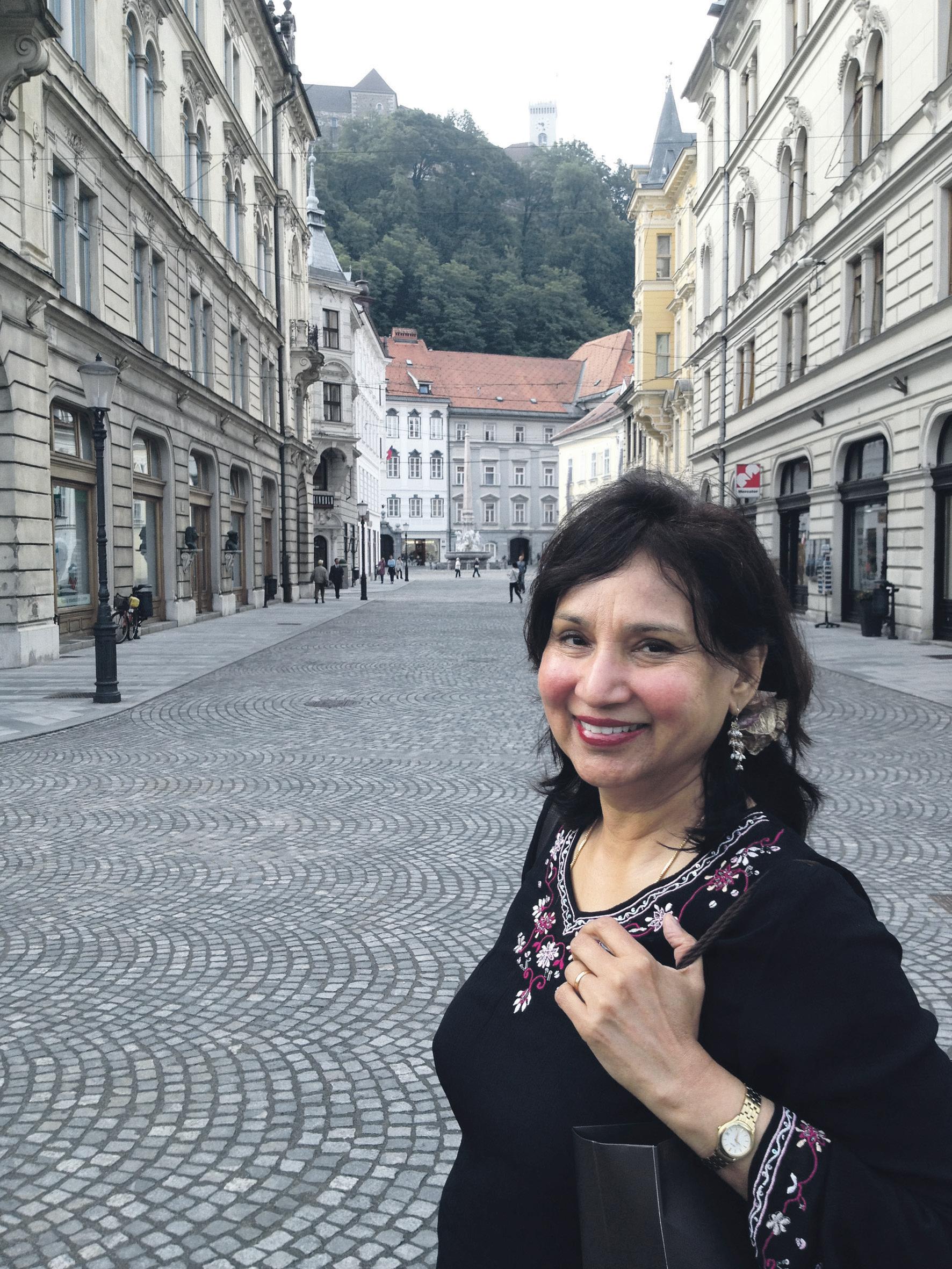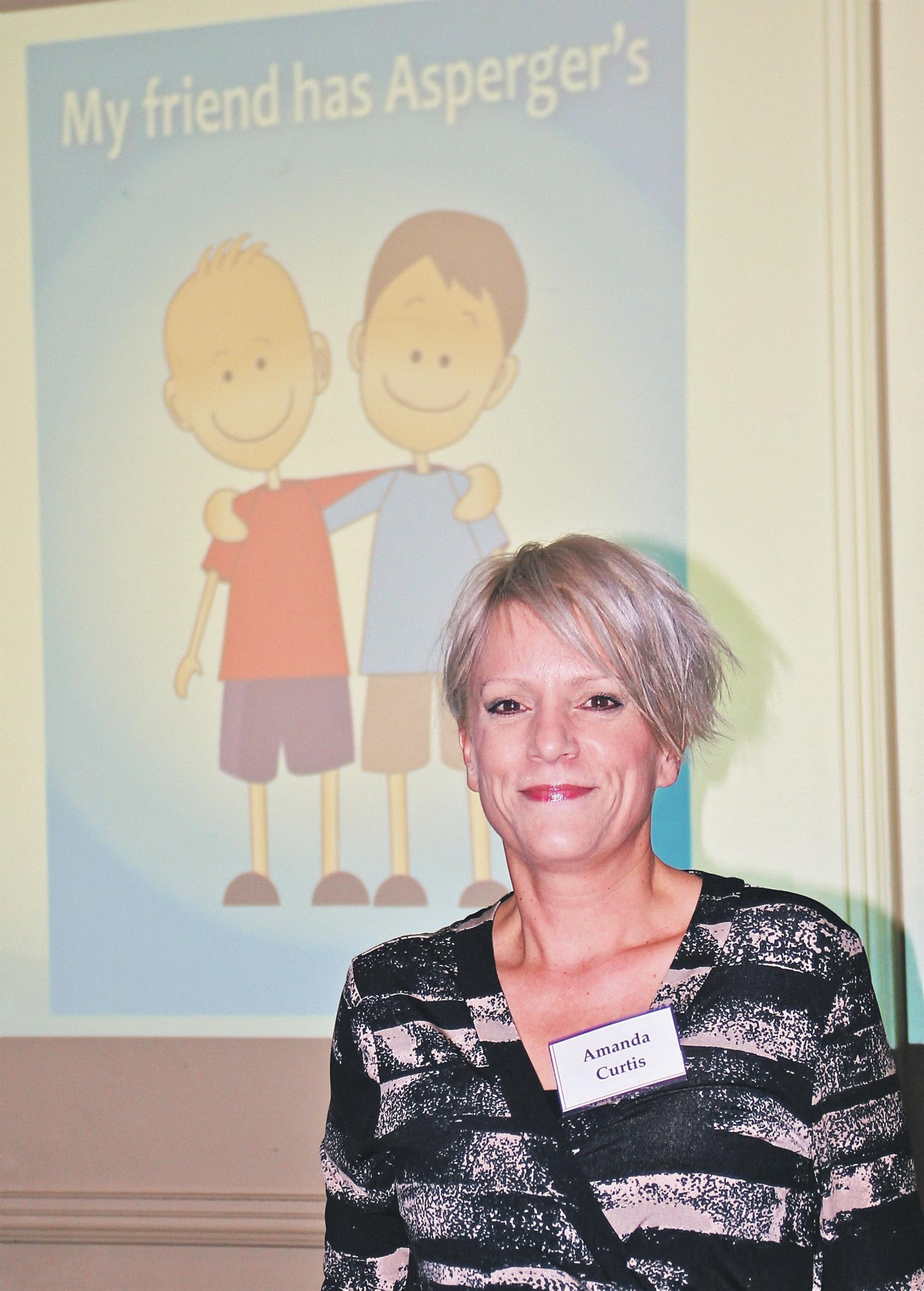
9 minute read
on autism
from 2013-04 Melbourne
by Indian Link
On April 2 this year, World Autism Day, Krishna’s fourth book, Why Me? An Inward Journey, was released by the Chief Justice of the Supreme Court of India. His previous books Wasted Talent, How Krishna Broke Free of Autism and From a Mother’s Heart – A Journal of Challenge, Survival and Hope document the inward odyssey
Improving autism patients
27-year-old Payal Kapoor and 8-year-old Prasam celebrate World Autism Day in Ahmedabad on April 2, 2013, with a team of doctors and Autism Awareness Campaign volunteers under the guidance of renowned neuropsychiatrist Vinod Kumar Goyal at his Parth Hospital
While it is expensive, early diagnosis and appropriate intervention can facilitate better management and eventually get the child to be a fully functioning member of society.
Dr Chitra Chandran is a Melbourne based paediatrician, who specialises in behavioural and developmental disorders.
“While developmental disorders have existed for many years, autism spectrum disorders are being increasingly recognised by maternal and child health nurses, teachers, caregivers and even family friends who know other families with children. This has led to [an] increasing number of families seeking assistance,” she says.
The core features of ASD, she explains, are delayed language, poor reciprocal social interaction and a poor repertoire of play skills. Other features include poor eye contact, obsessive behaviours, rituals, insistence on sameness, difficulties adapting to change, sensory issues with sounds, textures, flavours, smells and lack of empathy.
“Children who present such symptoms need to see a developmental/behavioural paediatrician as early as possible,” Dr Chandran urges.
“Early intervention definitely birthday,” she added.
“Even though parents are usually the first to notice that something is wrong, the diagnosis of autism is often delayed. Sometimes this happens because relatives, parents or even doctors downplay the early worrying signs of autism,” notes Linlee Jordan, a natural medicine practitioner and homeopath.
Jordan believes that early detection also allows parents to become aware of available options and start accessing them. “However, it is also never too late to start intervening,” she is quick to assure.
So what causes autism?
A hotly debated issue, autism has been attributed to many things from immunisation to additives and pollution. While conclusive research still needs to be done, genetics clearly play a role. “It’s good to know one thing that it is no longer debated at all - that parenting styles do not cause autism,” Jordan gladly acknowledged.
Early intervention
Currently, mainstream medical methods combine speech therapy, physiotherapy, occupational therapy, behavioural support, play therapy,
After intensive sessions tailored on the individual need, children are integrated into the preschool system, often under the supervision of special educators and trained aides.
These interventions can not only reduce behavioural issues but also help develop a child’s skills, and eventually, build up reasonable independence. Parents are also offered intensive counselling to help understand and support their children.
“However, there are many proven and unproven interventions. Parents do need to be careful when deciding what is best for their child and need to discuss this with their paediatrician or therapist before committing to therapies that can be very expensive,” warns Dr Chandran.
According to Dr Chandran, medication is only used if there are associated problems like anxiety, aggression and sleep issues. And even then as an adjunct with behavioural therapies, she adds.
“Ranjan used to be mortally afraid of dogs, which meant that we couldn’t take him to the park,” recalls Sandhya. Fear of the dark led to anxiety and tantrums. Through social stories and play therapy, all that has changed now.
Setting
Once therapy structures are set in motion, most children are integrated into mainstream schooling, depending on their intellectual abilities. There are also some autism specific schools for the more severely challenged children. Additionally, the private sector caters to this growing demand by offering integrated resources. One such school is Macquarie University Special Education Centre (MUSEC), which offers a tailored curriculum at the primary school level.
When Ranjan first enrolled in his day care centre, Sandhya would often worry about him running away. “Back then, he had no concept of boundaries. But his preschool director was not only very supportive, but also well aware of autism issues. For the first time I felt a sense of relief,” she confesses.
Ranjan’s high functioning autism meant that he was also able to attend a mainstream public school on ‘inclusion support’. The family did consider a support class at their zone school, which offers an individual learning programme.

Saakshi attends one such school and her parents hope to eventually relocate her to their local public school.
Adapting to autism
Many parents have to ‘unlearn’ their natural parenting instincts, and instead don a ‘special-parent’ avatar. Most autistic children have sensory integration issues (hyper or hypo-sensitivity to textures, sounds and motion). Some children are easily and uncontrollably excitable, so parents are taught to help them use ‘quiet hands and voice’ and get them to wear ‘weighted’ jackets to calm them down.
Aspect sells special products and toys to help teach these children coping strategies in a social setting. For Sandhya, Aspect merchandise has helped to regularise Ranjan’s behaviour patterns. Ranjan feels the need to suck on a pencil, as both a habit and for comfort. Regular pencils can be replaced with a child safe special pencil caps, to avoid sucking on poisonous lead.
Applied behavioural analysis (ABA) therapy has been the buttress therapy for most families, focusing on specific issues like eye contact, playing with peers or following classroom structures.
A typical program consists of repeated instruction, modelling and rewards for each child, along with a huge dose of love and patience.
In his very first week at a mainstream school, Sandhya was asked to pick up Ranjan as he kept doing somersaults. More settled now, Ranjan is learning now to say ‘bye’ and ‘hello’ to his mum before and after school, and respond to her questions. “The tantrums, anxiety and hyperactivity used to break my heart. But for his own good I had to be firm,” she admits.
Ranjan still hates writing and often hides his home-school communication notebook. But Sandhya has her own rewards system to encourage positive behaviour patterns. “If he behaves well in class and meets most expectations, I get him a cheese naan after school,” she says. Ranjan has responded extremely well to the rewards scheme.
“Most parents have high aspirations for their children. For me, the fact that he makes conversation with me and responds to questions is very rewarding,” she admits. He now wants to play cricket. “Can he really? I wonder. But for the moment I think I have found my inner peace. I don’t worry too much about what others think of him,” Sandhya says courageously.
Creating a support structure
Coping with autism can be quite a rollercoaster, taking its toll on marital harmony and family structure. And it can be even harder on minorities. This is why more effort needs to be made by the community as a whole, and educators and health specialists in particular, to reach out to these vulnerable people.
Akila Ramarathinam has not only helped her daughter Santoshi through the difficult diagnosis of autism, but has now reached out to many in the community. Through the Hindu Social Service Foundation (HSSF), she has for the past four years, created a strong network of support for people with disabilities. She conducts free workshops and day camps, and organises picnics and day events for both the disabled and their carers.
“When my daughter Santoshi had severe speech and language disabilities as a two-year-old, I was totally devastated,” she candidly admits. Like most Indian mothers, “why me? What have I done wrong to deserve this” was her immediate reaction.
It was her teenaged son, who literally showed her the way. Embracing adversity, Krishna took his mother to the Sydney Paralympics in 2000. “It was there that I realised that people with disabilities can turn their life around with determination. Their stumbling blocks can become stepping-stones too. It was a real eye opener for me,” she admits.
With support from Westmead Children’s Hospital and the Department of Disabilities, Santoshi was able to access to quality healthcare. “Take your child to playgroup, go on holidays, enrol in physical activity programmes like swimming, tennis or even go to the park. Shower the child with love,” is her strong recommendation.
Relying heavily on her friends’ network, she has campaigned tirelessly for the disabled cause since then. “My friends, my husband and my family have been an incredible support,” she proudly acknowledges.
Social stigma
While it is not uncommon for developmental milestones to be ignored or overlooked, often cultural and social stigmas about mental health and a fear of talking openly, or seeking information and help for the child prevents migrant families from admitting such issues. Many often hope against hope that the child will just grow out of it.
“Being the parent of a disabled child is not something to be ashamed of, is it?” asks Juhi. The Brisbane-based mother of two finds there is still a huge amount of stigma that parents face in accepting autism. “I know several Indian parents who have autistic kids, but deny it in the community with the hope that the kids will just grow out of it. Many even drop out of society because they are worried about comments. We have to learn to be more open and acknowledge reality,” she adds.

Disclosure
The issue of disclosure is a hurdle many parents prefer to avoid, and justifiably so. Already saddled by a weighty responsibility, most are uncomfortable disclosing the disability to an extended social group. “Given that support services and funding often hinge on the diagnosis, there is often a good reason to disclose a diagnosis to a school. However, in other settings it will depend on the individual and the depth of their problem,” says Jordan.
Fear of malicious gossip, tonguewagging and bullying are at the forefront of this. “Don’t feel shy or inhibited. Don’t hesitate to discuss with a friend. There is no point in being isolated and depressed, because you can’t really support your child then,” advises Akila.
Melbourne-based author and campaigner Amanda Curtis strongly advocates disclosure. She believes revealing the medical condition to the immediate school setting can reduce the effects of bullying, normalise relations and help form positive friendships.

“Once my son’s classmates knew why he was different and why he was disruptive, they stopped being unkind to him. A lot of the mothers also came up to offer support. Initially though, I was worried what the reaction would be,” she reveals.
Frustrated by the lack of teaching resources on the subject, Curtis has recently written a children’s book My Friend Has Aspergers. She has actively campaigned about disclosure, visiting schools around Melbourne and conducting workshops for parents. Her long-term goal is to change attitudes so that children with autism are better understood, accepted and celebrated.
Alternative therapies
Many autistics also suffer from a variety of food allergies, including eggs, nuts, dairy and wheat. It is believed that certain foods triggers toxicity in their bodies, which in turn affects the neurobiology. This is where homeopathy and Ayurveda are increasingly adding value to their lives.
“Working in conjunction with mainstream treatment structures, homeopathy takes a holistic approach, by working on the physical as well as emotional problems,” claims Jordan. Her holistic practice in Sydney’s Northern Beaches has treated
A restless, forgetful, complaining child with a craving for bacon will receive a completely different remedy to a child who is restless, forgetful, fearful of the dark and is very thirsty, but hates water.
Jordan believes in a combination approach for autism.
Initially the child may receive homeopathic treatment for which arise from the hair analysis test, which is done to assess mineral balance and heavy metal levels. The child may need supplementation with zinc, for example, if this mineral is low.
“Children with autism present complex cases and changes are expected to take time. What homeopathy does is to make them
Through early diagnosis, better teacher training and autism-friendly teaching programmes, a seamless transition into higher education and the workforce is achievable. While the future may look uncertain, it is heartening to note that many adults living with this disorder have carved out fulfilling lives. Meanwhile an Australian disorders is in the offing, funded by public-private partnership. Harnessing the combined research of professionals in the area, the Autism CRC hopes to deliver comprehensive solutions to both government as well as service providers in the health and education sector.


Autism resources
Helping Children with Autism (HCWA) info line: 1800 289 177 www.fahcsia.gov.au www.raisingchildren.net.au
Autism Spectrum Australia www.autismspectrum.org.au
Parenting Australia www.parentingaustralia.com.au
Early Childhood Intervention info line: 1300 656 865
Autism Victoria (Amaze) www.amaze.org.au
Autism Awareness Australia www.autismawareness.com.au

Carers NSW info line: 9280 4744 www.carersnsw.org.au
Parent info line (NSW): 13 20 55 (24hr service, run by qualified counselors for parents of children between 0-18)
Sue Larkey www.suelarkey.com.au (resources, strategies and Ideas for teaching)
Amanda Curtis’s websites: www.disclosingaspergers.com www.speciallittlepeopleseminars.com www.facebook.com/pages/DisclosingAspergers













